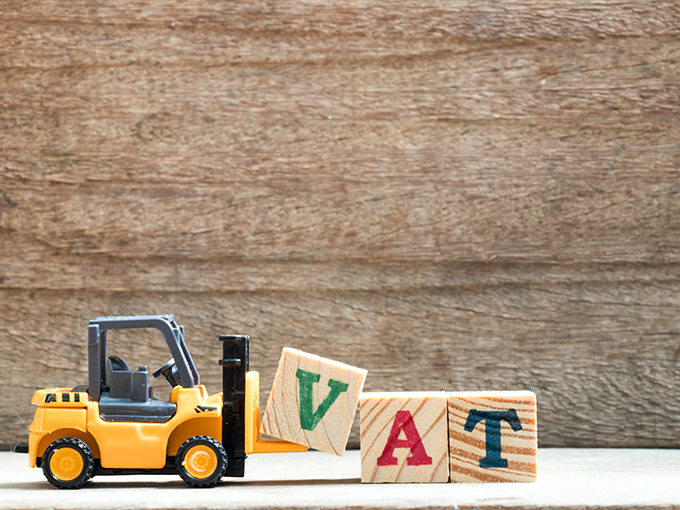After a summer holiday break, VAT Update is back. It’s also back to school, as we outline some of the complexities with respect to the VAT zero rate that applies to school uniforms. We also focus on the capital goods scheme (CGS) as a reminder that CGS adjustments are due at this time of the year. We comment on the reduced rate of VAT, which can apply to residential conversions and renovations, and finally we reflect on the recent UK government publication of the Border Target Operating Model.
As children return to school, they may be wondering what the new year has in store for them, while their parents and carers may be looking at the cost. One of the key expenses will be a new school uniform. However, at least there’s no VAT to pay on such purchases. Or is there?
Most people will be familiar with the fact that there’s a zero rate of VAT for children’s clothing; surely that includes school uniforms? Unfortunately, there isn’t any specific VAT relief for school uniforms, and the scope of the zero rate for children’s clothing is misleading. Where an item of clothing bears a prominent school logo, crest or badge, and are for pupils under 14-years-old, HM Revenue & Customs (HMRC) allows zero-rating (irrespective of size) for these, as they’re considered official school uniform. However, beyond this there’s no general VAT relief for school uniforms, and the VAT relief is based on clothing size, not age of the child.
HMRC guidance confirms that the VAT law seeks to give relief to young children, and references the fact that the original aim of Purchase Tax [levied between 1940 and 1973 before VAT was introduced] was to allow relief for all school children, as the school leaving age was 14 when relief was first introduced. This view appears out of date given the school leaving age has not been 14 for more than 50 years.
The main argument for HMRC seems to be that a general relief for school uniform would replace one form of discrimination with another. Since not all schools have uniforms, larger children attending a school without a uniform requirement would have to wear ordinary clothes subject to VAT at the standard rate.
As students return to concentrate on their education (the provision of which is either exempt or non-business for VAT depending on whether it’s a fee-paying school) then at least they should not have to pay VAT on other items that are essential or closely related to supplies of that education. Where a school or eligible body provides goods and services that are for the direct use of pupils, and necessary for the delivery of education to that pupil, then these supplies can qualify for VAT exemption. This can include catering, transport, and accommodation as well as school trips. Unfortunately for parents, it doesn’t extend to school uniforms and sports clothing, and unfortunately for the pupils, it doesn’t extend to sales from school vending machines.
Comments
Many families facing cost of living pressures are turning to pre-owned school uniforms in order to minimise the cost impact of their children going back to school. Given HMRC’s guidance on children’s clothing in general appears out of date, it’s perhaps the opportune time for those policies and the underlying legislation to be reviewed and amended accordingly. Since the UK left the EU, we have much greater flexibility regarding extending the scope of the zero rate of VAT. It remains to be seen whether the government will review this particular application of the zero rate.
For further information on the VAT position of education, and services and goods related to education, please get in touch with John Butterfield, VAT Director.
The Capital Goods Scheme (CGS) is a mechanism of adjusting the amount of input tax recovered on certain assets, the use of which changes over a period of time. As we are now in September, many VAT registered persons will soon have to calculate their CGS adjustments for partial exemption, year ending 31 March 2023. The CGS can be complex at times and many businesses may not realise they hold CGS assets. If they do, they’re required to consider whether there has been any change of use, which may trigger an adjustment to VAT recovery.
Capital assets that are within the scope of the CGS include:
- The purchase of land or property with the price paid £250,000, or more, plus VAT,
- The construction, alteration, extension or refurbishment to a building or civil engineering work with a VAT-exclusive price of £250,000 or more,
- Individual computers, or items of computer equipment with a VAT-exclusive cost of £50,000 or more, and
- The purchase/construction/refurbishment/alteration/extension of aircrafts, ships, and other vessels with a VAT-exclusive cost of £50,000 or more.
For CGS to apply, the costs, generally, need to be capitalised within the accounting, and if an asset is acquired or created purely for onward sale, CGS does not apply.
CGS adjustments are required annually, for each interval. For land and property assets there are 10 intervals, and five for the other types of CGS assets mentioned.
The first interval begins when the asset is first used, and ends the day before the start of the next partial exemption year. Subsequent intervals are normally in line with the partial exemption year.
Input tax adjustments under the CGS are required whenever the extent to which an asset is used in making taxable supplies changes, compared to the initial amount of taxable business use when the costs were incurred. Adjustments are typically accounted for in the second tax period after the end of the interval and are reported in Box 4 of the VAT return.
In the first interval, the intial amount of input tax that can be reclaimed is calculated by first determining the extent of business use of the asset (as opposed to non-business use), and then the extent to which the asset is used to make taxable supplies. This forms the baseline VAT recovery position, against which the use of the asset throughout the remaining intervals is compared. In essence, if the level of taxable business use goes up from the baseline, additional VAT becomes recoverable. Conversely, if the level of taxable business use goes down, the adjustment to make is in HMRC’s favour, with VAT effectively being repaid through the appropriate VAT return.
Comments
It’s important to recognise when a CGS asset is owned as the change in use between taxable, exempt and non-business, where applicable, will result in VAT recovery adjustments being due. For those with CGS assets, and with a partial exemption year ending 31 March, CGS adjustments are next due to be reported in the VAT return for quarter ending 30 September 2023, so VAT registered persons are reminded to be mindful of this.
Particular issues arise when an otherwise fully taxable trading company disposes of a property, which is a CGS asset, without considering the implications on its VAT recovery position. Taking advice in advance of making such a disposal is recommended to avoid any nasty VAT surprises. When acquiring a business as a transfer of a going concern (TOGC), it’s important to know when an existing CGS asset is being purchased as part of the transaction. Under TOGC and CGS rules, the transferee takes on the obligations of the remaining CGS intervals for a relevant asset. In that case, it’s necessary to ensure that the transferor makes all information available with respect to the original costs of the asset, and the original amount of VAT reclaimed with respect to those costs, and details of any adjustments made to date under the CGS.
If you have questions regarding how the CGS impacts your VAT reporting and the amount of VAT you’re able to reclaim, please get in touch with Nick Hart, VAT Director.
Converting or renovating properties is commonplace. It’s often more economical than new build properties and more acceptable to the local planning authorities seeking to preserve character in the local built environment. Due to the embodied carbon in existing buildings, renovation or conversion is also viewed in the right circumstances as being the most environmentally efficient way of bringing a site back into use. In some instances a renovation or conversion may not require planning permission and can be completed under permitted development rights. The VAT treatment and reliefs available for the construction works can be complex – and can turn on small details.
Construction services may be subject to VAT at the standard rate (currently 20%), reduced rate (5%), and zero rate (0%). The applicable rate(s) to apply will depend on the nature of the project. In the case of conversions/renovations, the applicable rates will be 20% or 5%, or a combination of the two.
The reduced rate applies to residential conversions and residential renovations or alterations, and there are separate legal provisions that cover these scenarios.
Where the reduced rate applies in these circumstances, it covers:
- Qualifying services supplied in the course of conversion, renovation or alteration, and
- Building materials supplied by the party supplying the qualifying services.
Qualifying services are works to the fabric of the property (not necessarily structural in nature) that are required as part of the conversion or renovations/alterations where applicable. They also include the provision of the following within the curtilage of the property: heat, power, water, security, access, drainage, or waste disposal.
Residential conversions
A qualifying residential conversion includes the conversion of a property where the number of single household dwellings is different after the conversion than the number that existed before it. The number of single household dwellings after the conversion must be one or more.
The following are some examples of when the reduced rate can be applied to a residential conversion:
- A building, eg, a barn, that has never been lived in being converted into a dwelling or number of dwellings,
- A non-residential building is converted into a dwelling or number of dwellings,
- A building consisting of two dwellings is converted into a building consisting of one dwelling or more than two dwellings, and
- A building consisting of one dwelling is converted into a building consisting of two or more dwellings.
For the purpose of this relief, the term single household dwelling means a dwelling that:
- Is designed for occupation by a single household,
- Consists of self-contained living accommodation,
- Has no provision for direct internal access from the dwelling to another dwelling or part of a dwelling, and
- The separate use or disposal of the dwelling is not prohibited by the terms of any covenant, statutory planning consent or similar provision.
The conversion works need to be carried out in accordance with necessary planning requirements where applicable.
Residential Renovations or Alterations
Qualifying renovations and alterations to existing residential properties are those which pass one of two empty homes conditions and if not met, the works are subject to the standard rate of VAT.
The first condition is that the residential premises must not have been lived in during the period of two years ending when the works start.
The second condition (applying to single household dwellings only) states that the dwelling must not have been lived in during the two years immediately before it was purchased, no renovation or alteration has been carried out during that period, and the services take place within one year of the acquisition of the dwelling.
The challenge with applying the empty homes relief is providing evidence that the property has not been lived in for two years. In practice such evidence will likely need to include a combination of elements, such as council records or utility bills.
Comments
It’s important that the correct rate of VAT is applied by contractors and sub-contractors. Property owners will often not be able to reclaim the VAT paid in these circumstances, so it’s imperative to their cost control that they’re not overpaying VAT.
If VAT is charged at a higher, incorrect, rate by a contractor, the property owner cannot reclaim this VAT from HMRC. For residential conversions and renovation projects, we recommend taking advice during the planning process and before works are put out to tender.
When assessing the availability of the reduced rate in these circumstances, it’s necessary to review any planning consent that has been granted for the conversion/renovation, as well as the before and after plans showing how the property will change as a result of the works.
If you’re a property owner considering a residential conversion project, or if you’re a contractor who undertakes residential conversions, please do get in touch with Nick Hart, VAT Director, to discuss further how and when the reduced VAT rate applies.
The August 2023 Border Target Operating Model (BTOM) has been released following a period of consultation, after the draft was published in April 2023. It covers new security measures which will apply to all imports, and changes will be phased in from January 2024. The BTOM also addresses sanitary and phytosanitary controls for the importation of animals, plants and associated products, the implementation of which has been pushed back from the original timeline set.
Some of the measures to be phased in will be aligned with the introduction of the UK Single Trade Window (USTW), in terms of timing. The USTW will provide a single data portal which importers and their agents will use to submit import data in one entry rather than having to input into a variety of systems in different circumstances. The USTW will reduce admin time and costs and avoid the same data having to be submitted through different platforms.
As part of its aims, BOTM will help to reduce the data requirements with regards to product safety and security, improve the efficiency of submission through the USTW, improve the government’s processing of data, and remove safety and security requirements for certain freeport goods, outbound transit, and fish from UK waters being exported.
The current revised timeline for implementation is:
- 31 January 2024: The introduction of health certification for medium-risk animals and plants (and associated products), and high-risk food and feed of non-animal origin from the EU.
- 30 April 2024: The introduction of documentary, identity and physical checks on medium-risk animals and plants (and associated products), and the removal of health certification and routine checks and low-risk animals and plants.
- 31 October 2024: The introduction of the requirement for safety and security declarations on certain imports.
Goods being shipped from the UK to Northern Ireland will continue to utilise the green and red lane system introduced by the Windsor Framework. The additional controls being implemented under the BTOM will not affect parties in Northern Ireland receiving goods from the EU. However, non-qualifying goods moving from Northern Ireland to Great Britain will be subject to increased controls. In the case of food and feed products for example, they would be considered to be qualifying if they’re owned or processed in Northern Ireland by a Northern Ireland registered or approved business. Non-qualifying goods will not be exempt from the sanitary and phytosanitary controls.
Goods arriving in Great Britain from Ireland will be subject to the new system of controls.
Comments
Importers, and their freight forwarders, and customs agents will need to prepare for the upcoming changes. Those operating in the food and agricultural sectors will need to ensure they are ready for when the changes are introduced. Delays at the border that have not been anticipated will likely lead to supply chain disruption, resulting in commercial impact.
The success of BTOM and USTW is very much dependent on the IT infrastructure, which underpins these initiatives. The development of USTW is still ongoing, and there are some concerns regarding the revised timeline of the new controls being introduced if USTW is not ready.
The advice is for affected stakeholders to start planning now for the changes, to ensure a smooth as possible transition.
The implementation of the new import controls may also provide an opportunity for businesses to review their import VAT accounting to ensure they are utilising Postponed Import VAT Accounting (PIVA), and Customs Duty costs, to ensure duties are not being overpaid where preferential origin rules can be applied.
For further assistance, please contact Nick Hart, VAT Director.
Contact Us
Partner, Edinburgh
Key experience




